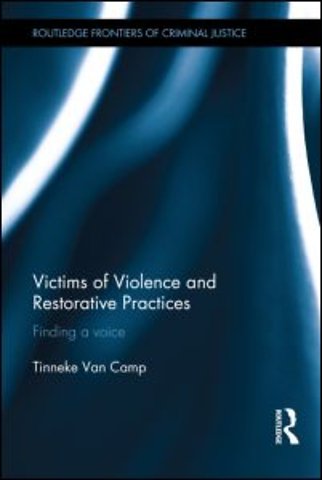Victims of Violence and Restorative Practices
Finding a Voice
Samenvatting
Restorative justice occupies an important place in criminological literature and criminal justice policies and is about facilitating communication between victims, offenders and communities in search of conciliation. Research shows that victims of crime are generally highly satisfied with their participation in a restorative intervention, such as victim-offender mediation, family group conferencing and victim-offender encounters. In order to maintain good restorative practice, the reasons why restorative justice is appreciated need to be clearly understood. In this book, Tinneke Van Camp identifies and explores the factors that contribute to victims’ appreciation of restorative practices in order to advance insight into why restorative justice works for victims.
Based on original research and qualitative interviews with victims of violent crime, this book draws on procedural justice theory and socio-psychological studies and analyses how victims value restorative interventions. The findings shed a light on the factors that contribute to victim satisfaction with restorative interventions and show how they relate to procedural fairness, as well as allow an exploration of how the timing of the restorative intervention in the criminal justice proceedings affects victim appreciation.
With its use of in-depth interviews and case descriptions, this book will be of interest to academics, practitioners and students alike. It will be of particular interest to those engaged in the study of victims and victim concerns, restorative justice and procedural justice.
Specificaties
Anderen die dit kochten, kochten ook
Net verschenen
Rubrieken
- aanbestedingsrecht
- aansprakelijkheids- en verzekeringsrecht
- accountancy
- algemeen juridisch
- arbeidsrecht
- bank- en effectenrecht
- bestuursrecht
- bouwrecht
- burgerlijk recht en procesrecht
- europees-internationaal recht
- fiscaal recht
- gezondheidsrecht
- insolventierecht
- intellectuele eigendom en ict-recht
- management
- mens en maatschappij
- milieu- en omgevingsrecht
- notarieel recht
- ondernemingsrecht
- pensioenrecht
- personen- en familierecht
- sociale zekerheidsrecht
- staatsrecht
- strafrecht en criminologie
- vastgoed- en huurrecht
- vreemdelingenrecht







